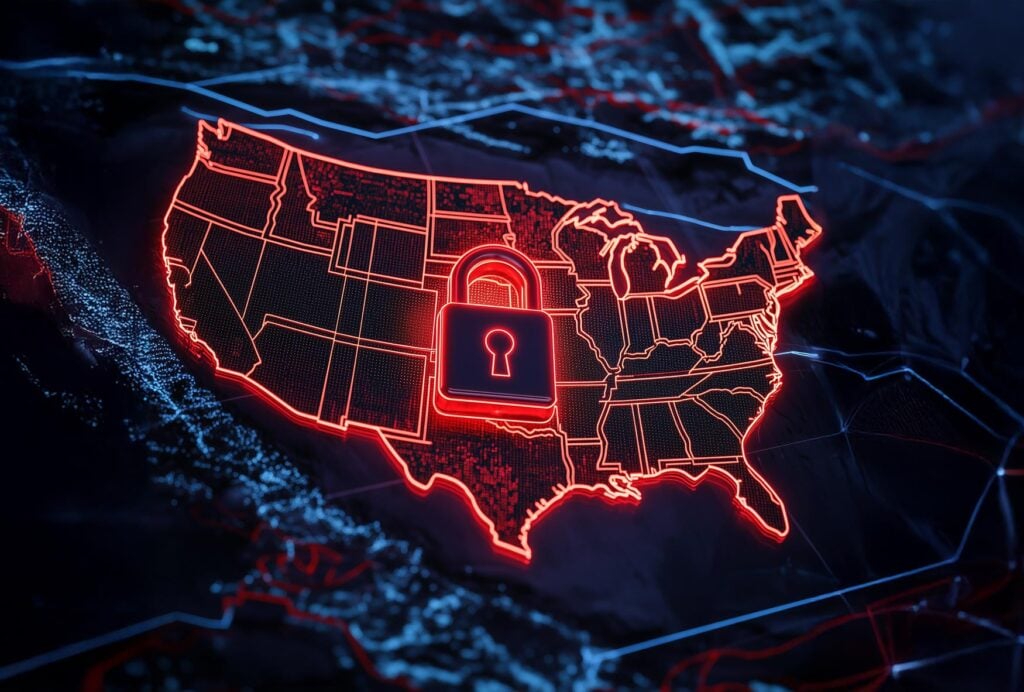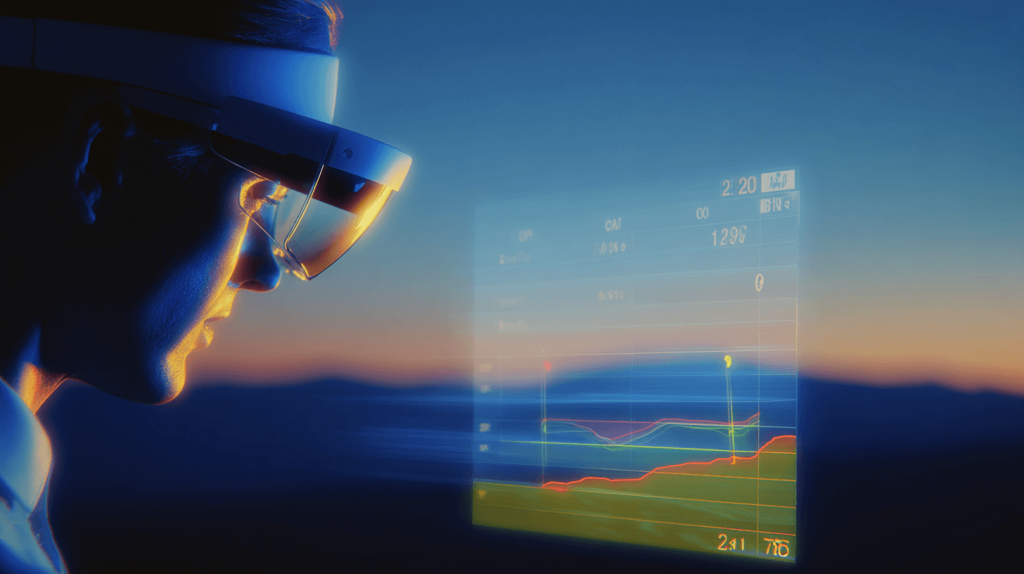If you’re looking to understand how to obtain a software patent in the US, you’re in the right place. This comprehensive guide covers everything you need to know, from eligibility criteria to filing procedures and overcoming common challenges. Let’s dive in and explore the essentials of securing a software patent in the US.
In the rapidly advancing field of technology, securing a software patent offers a strategic advantage by protecting your innovative solutions from unauthorized use or reproduction. The journey to obtaining a software patent involves navigating a complex landscape of legal requirements and technical specifications. Understanding the nuances of patent law, especially as it pertains to software, is crucial for innovators seeking to protect their intellectual property.
Staying informed about these developments and adapting your patent strategy accordingly can help secure your innovations in an increasingly competitive market. By understanding the intricacies of software patenting in the US and leveraging expert guidance, you can effectively protect your intellectual property and maintain a competitive edge in the technology industry.
Key Takeaways
- Software patents protect innovative software as a form of intellectual property by granting exclusive rights to the patent holder, but they must meet specific eligibility criteria, including novelty, utility, and non-obviousness.
- The USPTO plays a crucial role in the patent process, examining applications for compliance with patent laws and enforcing stringent requirements, often necessitating the expertise of specialized patent attorneys.
- The future of software patents is evolving, driven by advancements such as AI and ML, with increasing activity in fields like virtual reality and green technology, and the importance of working with knowledgeable patent attorneys for effective protection.
Understanding Software Patents
Patents for software are essential in safeguarding various software types, encompassing both standalone programs and integrated solutions, given they meet certain standards. Achieving a patent grants the owner unique privileges to exploit, bend, and circulate the protected software, offering a substantial advantage over competitors. It wasn’t until legal judgments evolved that some forms of software inventions were considered eligible for patents—a significant transformation in how patents are viewed.
The landmark decision by the Supreme Court known as Alice set forth clear stipulations regarding patent eligibility. To be protected under a patent grant, the software must transcend being just an abstract concept. In essence, this signifies that to qualify under Section 101 of the Patent Act’s categories of protection, there need to be additional inventive concepts within a submitted application. It is insufficient for these applications to merely represent abstract ideas without Inventiveness.
With this basic understanding of what constitutes patentability in terms of Software inventions at hand, your journey through intricate layers of securing such intellectual property rights begins. Delving deeper into roles played entails acknowledging the United States Patent and Trademark Office (USPTO), which serves as a pivotal agency administering the issuance process ensuring innovative creations become formally recognized patents.
The Role of the USPTO in Software Patents
The US Patent and Trademark Office (USPTO) is integral to the issuance of patents for software-related inventions. As a federal agency, it scrutinizes patent applications against rigorous standards such as novelty, non-obviousness, usefulness, and statutory subject matter before granting patents. Its mission ensures that only genuinely novel and beneficial software innovations are afforded patent protection to prevent their unauthorized production, utilization or distribution.
Navigating through the intricacies of patenting software developments presents significant challenges. Navigating through the intricacies of patent prosecution is a significant challenge. Each application must precisely define the invention in order to validate its originality and functional value. It is commonplace for initial submissions to be rejected. Many applications fail on their first examination due to these intricate demands. Thus, enlisting specialized legal experts becomes critical for successfully overcoming such obstacles.
In this scenario, enlisting a dedicated attorney with expertise in patents can significantly enhance an inventor’s prospects of obtaining a patent by meticulously crafting comprehensive applications while adeptly managing any objections or appeals that may arise during the process – ultimately boosting one’s likelihood of attaining rights over innovative software solutions.
Eligibility Criteria for Software Patents
To secure a patent for a software innovation, it must satisfy various rigorous requirements set by the United States Patent and Trademark Office (USPTO). These criteria encompass originality, utility in practice, and non-obviousness. The proposed invention needs to be distinguishably unique compared to any previous inventions or publicly available information. To confirm that your software is truly original, it’s vital to undertake an extensive prior art search.
The concept of non-obviousness plays an equally important role. Your software should offer evident advancements over current technological offerings and present unforeseen benefits or novel approaches that wouldn’t be readily deduced by someone skilled in the relevant field. Proving this element can pose significant challenges, but remains imperative for obtaining patent authorization.
The functionality aspect cannot be ignored. Your software must have practical uses rather than being merely theoretical—effectively demonstrating its real-world applicability is paramount. For your creation to meet the standards for patent eligibility under applicable laws within a given jurisdiction, it has to exhibit novelty, unexpected ingenuity (non-obviousness), and tangible usefulness.
Compiling an application for such patents necessitates precise and detailed documentation which assumes no specific technical knowledge on the part of USPTO examiners reviewing the submission. A robust grasp of these key eligibility parameters forms an essential foundation when advancing through stages like filing submissions as well as addressing any objections that may arise during examination processes.
How To Get A Software Patent In US – Filing a Software Patent Application
Submitting a patent application for software is bound by critical timing constraints. A provisional patent application can be a cost-effective approach to securing an early filing date while deferring the expenses associated with a full application. The application must be lodged within one year following any form of the invention’s public unveiling. A considerable financial commitment accompanies these patent applications, necessitating meticulous strategic planning and allocation of funds.
Maintaining secrecy is vital throughout this procedure. Prior to divulging intricate details about your invention, implement non-disclosure agreements. If disclosures in the patent application are insufficiently detailed, it may result in its disqualification. As such, it’s imperative to include comprehensive descriptions and illustrations for enhanced transparency.
It is crucial to promptly address rejection notices which typically require action within three months (with potential extension up to six months). To elucidate on what makes your invention unique and tackle challenges presented by prior art cited in the report, amending claims can prove beneficial.
Exploring other avenues such as reapplying or opting for a provisional patent might pave additional paths toward obtaining approval. Grasping these procedures contributes greatly towards streamlining your journey through the patenting landscape.
Patent Grants and Maintenance
Patent grants represent a pivotal milestone in the patent application journey, marking the transition from a mere idea to a legally protected innovation. The United States Patent and Trademark Office (USPTO) plays a crucial role in this process, meticulously reviewing each application to ensure it meets stringent criteria for novelty, non-obviousness, and utility. The total number of patents granted can fluctuate significantly from one calendar year to the next, often reflecting broader trends in technological advancement and innovation.
Utility patents, in particular, are a focal point for many companies aiming to safeguard their groundbreaking technologies. These patents cover new and useful processes, machines, manufactures, or compositions of matter, and are essential for protecting the core functionalities of innovative software solutions within a company’s patent portfolio. Companies like Samsung Electronics and LG Electronics heavily rely on these patent grants to secure their intellectual property and maintain a competitive edge in the market.
The patent grants process involves a thorough examination of each application, ensuring that only truly novel and useful inventions receive protection. This rigorous scrutiny helps maintain the integrity of the patent system and prevents the issuance of patents for ideas that do not meet the necessary standards.
Once a patent is granted, maintaining it becomes equally important. Patent maintenance involves paying periodic fees to keep the patent in force, allowing companies to continue reaping the benefits of their innovations. This ongoing investment in patent maintenance ensures that the intellectual property remains protected, providing a sustained competitive advantage and encouraging further innovation.
Patent Infringement and Enforcement
Patent infringement occurs when an individual or company uses a patented invention without the patent holder’s permission, undermining the value of the patent and potentially causing significant financial harm. Effective patent enforcement is critical for companies looking to protect their intellectual property and prevent unauthorized use of their innovations.
In today’s technologically advanced landscape, artificial intelligence (AI) and machine learning (ML) have become invaluable tools in detecting and enforcing patent infringements. These technologies can analyze vast amounts of data to identify potential infringements, making it easier for companies to take swift action against violators. For instance, autonomous vehicles, which rely heavily on patented technologies, necessitate robust patent enforcement to protect the intricate systems that enable their operation.
South Korea, known for its technological prowess, has witnessed a notable increase in patent infringement cases in recent years. This trend underscores the importance of vigilant patent enforcement in regions with high levels of innovation. Data analysis plays a crucial role in these cases, helping to identify patterns and trends that can inform enforcement strategies.
A comprehensive report on patent infringement and enforcement can provide valuable insights for companies navigating this complex landscape. Such reports often include detailed analysis of infringement cases, enforcement actions, and emerging trends, offering a roadmap for protecting intellectual property in an increasingly competitive market.
By understanding the nuances of patent infringement and leveraging advanced technologies for enforcement, companies can better safeguard their innovations and maintain their market position.
Overcoming Common Rejections
Encountering rejections is a typical scenario during the patent application journey. It’s essential to dissect and understand the particular points of contention outlined in the rejection notice, which equips you with insights necessary for crafting a more persuasive rebuttal. Rejections under Section 101 are frequent, especially concerning software’s eligibility for patents. To conquer such objections, one must accentuate the inventive step and practical applications of their creation, proving it conforms to established criteria for patentability.
Should initial counterarguments fail to achieve an allowance, applicants can resort to appealing an office action as a means of inviting scrutiny from alternate examiners or judicial panels. This stage may prove pivotal in dispelling disputes and attaining that coveted patent status—each round of contention serving as a chance to polish your submission while asserting your invention’s distinctiveness.
Employing these tactics against prevalent disapproval plays an indispensable role in adeptly steering through the complexities involved in securing patents—vital steps toward safeguarding your technological innovations.
Top Companies Leading in Software Patents
In 2023, several tech companies made significant strides in software-related patent applications, showcasing their commitment to innovation in various technological domains:
| Rank | Organization | 2023 Patents | Change from 2022 |
|---|---|---|---|
| 1 | Samsung Electronics Co., Ltd. | 9,036 | +5% |
| 2 | LG Corporation | 4,170 | -9% |
| 3 | International Business Machines | 3,953 | -15% |
| 4 | Qualcomm | 3,886 | +46% |
| 5 | Taiwan Semiconductor Mfg. Co. | 3,719 | +22% |
| 6 | Canon K.K. | 3,199 | +5% |
| 7 | Toyota Jidosha K.K. | 2,667 | -12% |
| 8 | Alphabet Inc. | 2,579 | +23% |
| 9 | Apple Inc. | 2,568 | +11% |
| 10 | Huawei Technologies Co., Ltd. | 2,290 | -24% |
Source: 2024 Patent 300 List by Harrity Patent Analytics6This table format allows for easy copying and pasting into an article, and the source link can be included as a reference. The data shows the top 10 organizations by number of patents granted in 2023, along with the percentage change from 2022.
- IBM led the pack with 1,211 AI-related U.S. utility patents granted. While not all of these are exclusively software patents, AI patents often involve significant software components.
- Alphabet Inc. (Google’s parent company) secured 870 AI-related patents, many of which likely involve software innovations in areas such as machine learning, search algorithms, and data processing.
- Samsung Electronics obtained 750 AI-related patents, reflecting their focus on software innovations in areas like mobile technology, smart devices, and user interfaces.
- Amazon.com, Inc. was granted 541 AI-related patents, which likely include software innovations in e-commerce, cloud computing, and voice recognition technologies.
- Microsoft Corporation received 527 AI-related patents, potentially covering areas such as operating systems, productivity software, and cloud services.
These numbers demonstrate the continued importance of software-related patents in the tech industry. While specific details of patent applications are not provided in the search results, it’s clear that AI and software innovations remain a key focus for major tech companies.It’s worth noting that patent applications often involve complex technical solutions.
For example, effective software patent claims should highlight engineering solutions to technical challenges and be narrowly tailored to address specific pain points solved by the invention.The trend of AI and software patent applications is expected to continue, with AI being the fastest-growing major technology area in global patent filings, showing an average annual growth rate of 28% from Q1 2018 to Q1 2022.
The Impact of Artificial Intelligence and Machine Learning on Software Patents
The adoption of artificial intelligence (AI) and machine learning (ML) across various sectors has precipitated an influx in the filing of patent applications, particularly those related to advanced technologies such as Large Language Models adept at generating text and multimedia content that closely resembles human output. The rise in patents for groundbreaking innovations like Generative Adversarial Networks (GANs), which feature two neural networks vying to produce indistinguishable data replicas, underscores the rapid progression within AI realms.
There is also a marked increase in patent filings surrounding Neural Symbolic Computing — a domain that fuses neural networks with symbolic reasoning capabilities — signifying its growing importance within AI analysis frameworks. With AI increasingly weaving into core business processes, there’s anticipation for heightened complexity regarding intellectual property rights issues tied to ownership claims over outputs generated by AI systems.
These trends highlight the dynamic evolution present within software patents and underscore how critical it is to remain informed about ongoing technological advancements. Understanding the role of AI and ML vis-à-vis software patents provides invaluable insights into predicting future shifts while equipping entities to navigate potential hurdles as well as seize emerging opportunities effectively.
Case Studies: Successful Software Patents
Patents in the software domain are critical to propelling innovation and influencing market dynamics. Take Doordash’s patent pending application that details a self-automated vehicle as an example. It is specially tailored for the efficient transit of perishable items, reflecting advanced development in last-mile logistics solutions. Meanwhile, Facebook’s own pending patent pertains to a dynamic mask feature which employs social data to personalize mask recommendations for users, thereby improving their engagement on social media platforms.
Airbnb has secured a patent (US1005315B2) geared towards refining its accommodation listing services by leveraging predictions on property booking probabilities. These examples serve as compelling evidence of how inventive software patents can significantly upgrade business functionalities and elevate consumer experiences across various sectors.
Such proven patents provide clear testimony to how ingenious advancements within software can bolster business expansion and catalyze changes throughout markets.
International Perspective: Software Patents in South Korea
Over the past ten years, South Korea has seen a marked increase in the number of software patent applications. This surge illustrates the country’s dedication to fostering innovation. The Korean Intellectual Property Office (KIPO) is instrumental in examining and issuing these software patents within South Korea. Although both South Korea and the United States agree on considering software as an eligible subject for patents, criteria are more stringent in South Korea when it comes to technical contributions.
When compared with the United States, patent enforcement processes in South Korea tend to be quicker, resulting in quicker settlements of disputes concerning patents. These distinctions underscore that entities operating internationally must tailor their strategies around intellectual property accordingly.
For inventors and enterprises across the globe aiming at safeguarding their technological advances under different legal systems, grasping how software patents operate worldwide is essential. Adjusting approaches to align with diverse regulations and procedures pertaining to patents enables all-encompassing security for innovations.
The Future of Software Patents
The trajectory of software patents appears set for substantial progress. The Patent 300® list, which ranks entities on the basis of utility patents issued in the U.S., brings attention to leading companies within the sphere of patents. It is expected that there will be a significant increase in patent activity within the virtual reality industry, especially with advancements focused on augmenting realism by merging actual and digital realms.
Shifts toward eco-friendly practices are shaping patent applications. An upsurge in innovations related to sustainable technology is anticipated soon. By 2024, it’s projected that digitization and automation will revolutionize efficiency within legal departments concerning patent administration.
These movements suggest a vigorous and changing arena for software patents shaped by technological advancement and evolving demands from markets. For inventors and businesses keen on sustaining competitiveness and innovation within this field, keeping ahead of these trends is essential.
Work With An Experienced Software Patent Attorney to Protect Your Software
Securing the services of a knowledgeable software patent attorney is crucial for effectively maneuvering through the intricate procedures involved in filing a patent application. Such an attorney delivers thorough legal advice pinpointing every intellectual property rights and patentable element within your software innovation to enhance its protection. Experts in patent law are also adept at safeguarding against possible violations, providing assurance that your intellectual property stays protected.
Collaborating with a seasoned lawyer can assist you in crafting a tactical portfolio of patents tailored to meet your business goals and augment appeal to potential investors. Attaining a patent with professional legal help can substantially strengthen your foothold within the dynamic technology industry marketplace.
Summary
To summarize, securing software patents is pivotal for safeguarding pioneering software innovations and sustaining a competitive advantage within the tech sector. It’s imperative to grasp the significance of the USPTO, comprehend eligibility requirements, and master the patent application procedure in order to successfully obtain a patent. Drawing lessons from prominent firms and analyzing triumphant case studies offers crucial knowledge about navigating through common obstacles encountered during the patent process.
Examining developments in artificial intelligence along with global perspectives, especially those emerging from South Korea, underscores the evolving environment surrounding software patents. As we look towards future advancements in this field, remaining abreast of upcoming trends and collaborating with seasoned patent legal advisors will be essential to ensure comprehensive protection for your technological inventions and their market viability.
Frequently Asked Questions
What are the main criteria for a software invention to be patentable?
For a software invention to be patentable and fall under intellectual property rights, it must meet the criteria of novelty, non-obviousness, and practical utility. It should substantially differ from prior art, demonstrate clear improvements, and serve a specific function.
How does the USPTO handle software patent applications?
The USPTO rigorously examines software patent applications for novelty, non-obviousness, utility, and eligibility, and patent prosecution.
To navigate potential rejections effectively, it is advisable to consult a specialized patent attorney.
What are some common reasons for software patent rejections?
Software patent rejections are often due to lack of novelty, non-obviousness, and inadequate disclosure.
To enhance your application’s chances, focus on clearly demonstrating the unique features and practical applications of your invention and addressing any issues raised in the office action.
Which companies are leading in software patents?
Samsung Electronics, LG Electronics, and Qualcomm are the leading companies in software patents, demonstrating a strong commitment to innovation in the technology sector and maintaining a robust patent portfolio.
How is the international landscape for software patents different?
Different countries have distinct approaches to software patent laws, with nations such as South Korea establishing more stringent qualification requirements and stronger enforcement procedures compared to the United States, overseen by the Korean Intellectual Property Office.
It is essential to align with these varying international patent regulations in order to secure comprehensive worldwide protection for software-related inventions.




